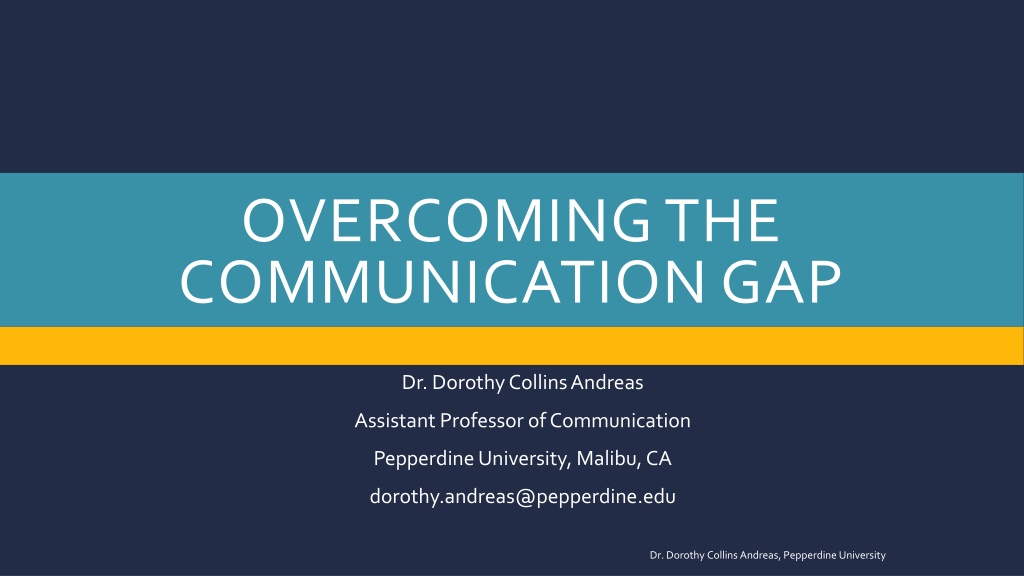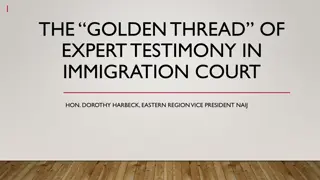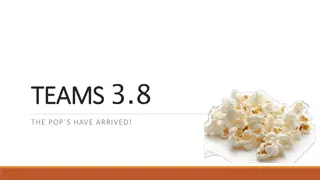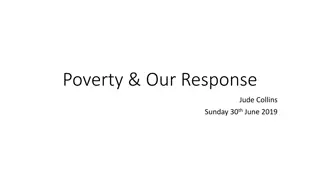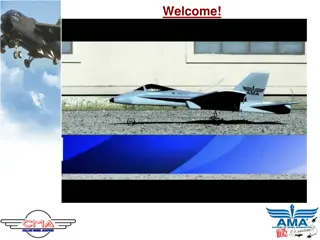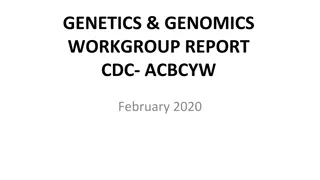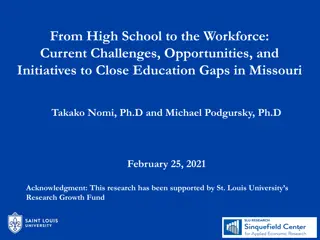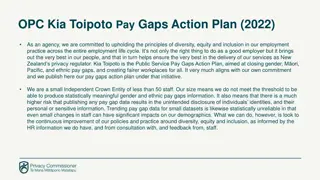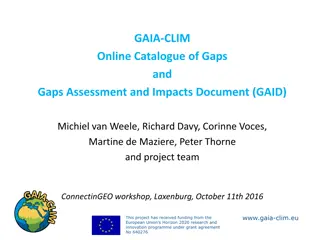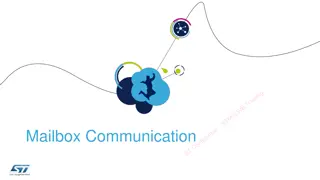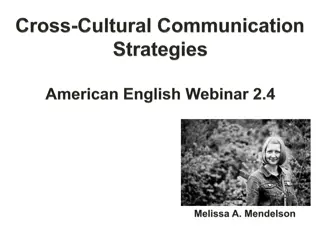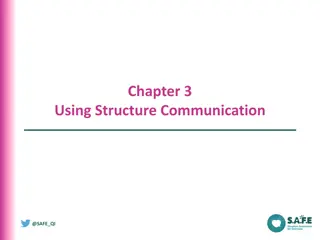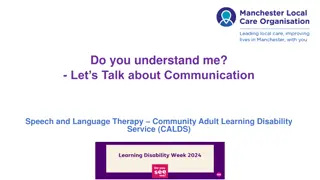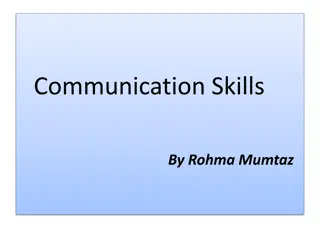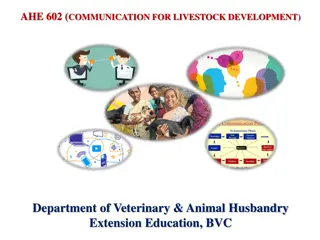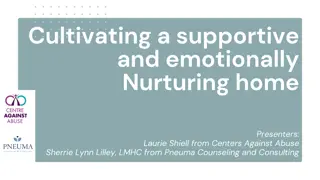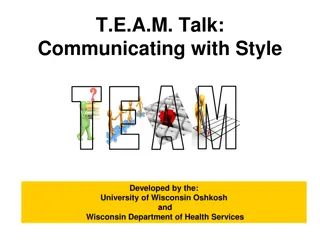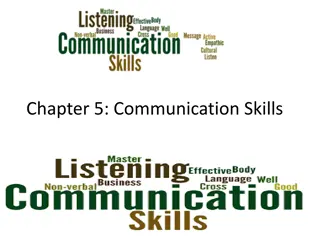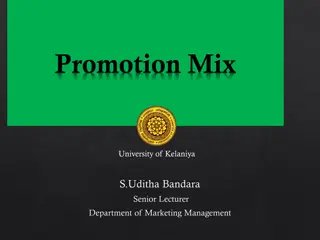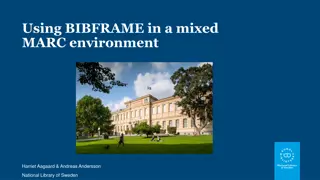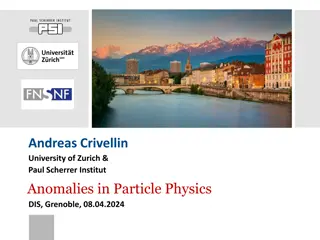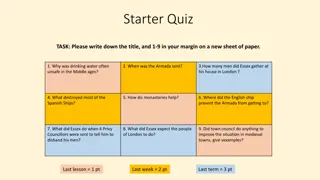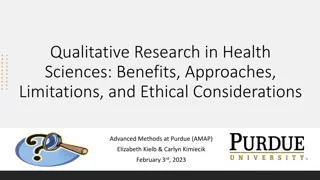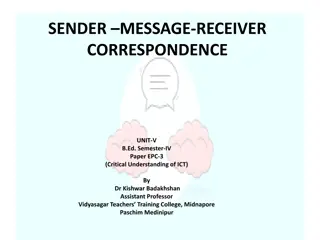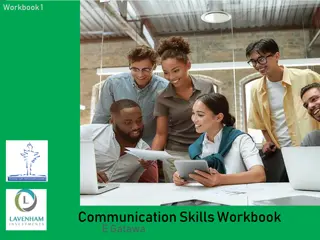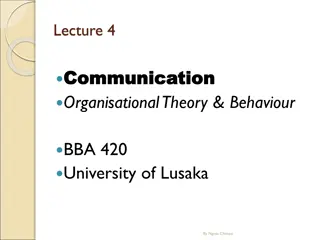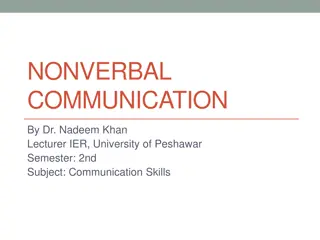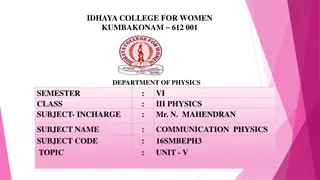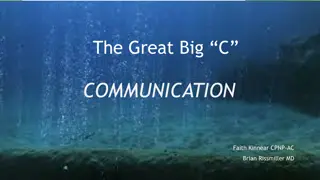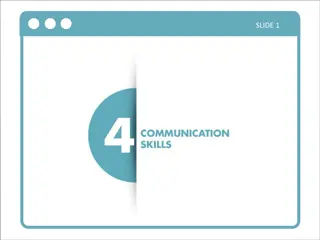Understanding Communication Gaps with Dr. Dorothy Collins Andreas
Delve into the intricacies of communication gaps with Dr. Dorothy Collins Andreas from Pepperdine University. Explore topics such as competent communication, the concept of a communication gap, and the HRO theory. Gain insights on how to overcome communication barriers and enhance connections in various contexts.
Download Presentation

Please find below an Image/Link to download the presentation.
The content on the website is provided AS IS for your information and personal use only. It may not be sold, licensed, or shared on other websites without obtaining consent from the author. Download presentation by click this link. If you encounter any issues during the download, it is possible that the publisher has removed the file from their server.
E N D
Presentation Transcript
OVERCOMING THE COMMUNICATION GAP Dr. Dorothy Collins Andreas Assistant Professor of Communication Pepperdine University, Malibu, CA dorothy.andreas@pepperdine.edu Dr. Dorothy Collins Andreas, Pepperdine University
UNPACKING COMMUNICATION GAP Dr. Dorothy Collins Andreas, Pepperdine University
WHAT IS COMMUNICATION? Definition: "how we make sense of the world and share that sense with others through verbal and non-verbal messages" (Beebe, Beebe, & Ivy, 2007) Properties Meaning created through messages in interaction Symbolic Cultural Challenge to a Communication Scholar Provide expertise and advice in area where everyone has experience and, at least some, level of expertise Confirm, challenge, and modify everyday assumptions Dr. Dorothy Collins Andreas, Pepperdine University
WHAT IS COMPETENT COMMUNICATION? Effectively manage 3 goals in manner that conforms to social norms and standards of appropriateness for the context 1. Face: present competent and credible image of self 2. Relationship: escalate, maintain, terminate relationships 3. Task: accomplish instrumental tasks Reference: Canary, Cody, & Manusov, 2003 Dr. Dorothy Collins Andreas, Pepperdine University
WHAT IS A "COMMUNICATION GAP?" Gap lack of connection To overcome the communication gap need to forge connections Connections with claims, data, and reasoning (quality arguments) Connections with knowledge from other disciplines Dr. Dorothy Collins Andreas, Pepperdine University
THE CONTEXT Dr. Dorothy Collins Andreas, Pepperdine University
HRO THEORY Organizations that operate hazardous technologies without leading to catastrophe 5 Principles of HRO Theory 1. Preoccupation with failure every piece of information is potential symptom that something is wrong 2. Reluctance to accept simplistic explanations and models always questioning current mental models 3. Sensitivity to operations situation awareness of the system in its present state 4. Commitment to resilience continuous learning 5. Deference to expertise cultivate diverse set of knowledge and expertise Reference: Weick & Sutcliffe, 2007 Dr. Dorothy Collins Andreas, Pepperdine University
COLLECTIVE MINDFULNESS Collective ability to pay attention to new information and to determine how the information provides insight into the interactions of the system and help the organization prevent hazards Communicative accomplishment Organizational culture factors: participatory climate helps Individuals have voice to express ideas and concerns Organization has open communication climate Individuals have easy access to relevant information Individuals engage in continuous, contextual learning Reference: Novak & Sellnow, 2009 Dr. Dorothy Collins Andreas, Pepperdine University
THE CHALLENGES Dr. Dorothy Collins Andreas, Pepperdine University
WHAT ARE CHALLENGES TO INTERDISCIPLINARY COMMUNICATION? Poor Face and Relationship Management Hinders Task Accomplishment Use of disciplinary specific language without definition or concern for adaptation Verbal and nonverbal cues of boredom Expressions of negative humor or sarcasm Debating expertise as attempt to gain power or control Interruptions without repair or apology Expressed disagreement without rationale Reference: Thompson, 2009 Dr. Dorothy Collins Andreas, Pepperdine University
WHAT ARE CHALLENGES TO INTERDISCIPLINARY COMMUNICATION? Unquestioned Relational Dynamics Lead to Poor Task Outcomes (Groupthink) Critical thinking is not rewarded or encouraged (closed communication climate) Members are so cohesive they think they can do no wrong Members are too focused on justifying their own actions Members think they have reached a true consensus Members are too concerned with reinforcing leaders' beliefs and attitudes Reference: Janis, 1989 Dr. Dorothy Collins Andreas, Pepperdine University
WHAT ARE CHALLENGES TO INTERDISCIPLINARY COMMUNICATION? Underdeveloped Group Argument Interactions Hinder Ability to Accomplish Task Different disciplines have different premises and patterns of reasoning People tend to communicate in enthymemes premises unclear Syllogism 1 Enthymeme Syllogism 2 NRC is a diligent and safety- focused organization. Cannot trust NRC to consider all aspects of safety. Major Premise The inspection report has no findings. The inspection report has no findings. The inspection report has no findings. Minor Premise The plant is operating safely. NRC didn't look hard enough plant may not be operating safely. Conclusion Dr. Dorothy Collins Andreas, Pepperdine University
WHAT TO DO (OR SAY) 3 Heuristic Frameworks From Communication Studies Toulmin and Group Argument Competent Group Communicator Scale Collective Communication Competence Dr. Dorothy Collins Andreas, Pepperdine University
THE TASK GOAL: WHY TOULMIN IS PARTICULARLY RELEVANT History and goals of Toulmin's project Helps surface taken-for-granted assumptions and premises that may come from organization, disciplinary knowledge, and/or professional experience Dr. Dorothy Collins Andreas, Pepperdine University
THE TASK AND RELATIONAL GOAL: WHY GROUP INTERACTION IS RELEVANT Arguments are co-created in interaction Interaction patterns can lead to more or less sophisticated argument patterns More sophisticated argument patterns help members synthesize knowledge and reasoning Test and refine proposals Compare and evaluate alternative understandings When appropriate, eliminate ideas Less sophisticated argument patterns result from poor management of face and interpersonal influence Recognize that groups tend to seek convergence Reference: Seibold & Meyers, 2007 Dr. Dorothy Collins Andreas, Pepperdine University
THE TASK AND RELATIONAL GOAL: TYPES OF STATEMENTS Reference: Seibold & Meyers, 2007 Arguables Disagreement-Relevant Intrusions Generative Mechanisms Objections Deny accuracy of arguable Assertions Statement of fact or opinion Challenges Offer question or problem must be addressed to secure agreement Propositions Call for support, action Delimitors Reasoning Activities Frames Provide context for arguable Elaborations Support with evidence, reasons, etc Responses Defend arguables Forestall/Secure Secure common ground to forestall refutation Amplification Expound to show relevance through inference Forestall/Remove Remove possible objections to forestall refutation Justification Cite rule of logic Nonarguables Convergence-Seeking Activities Process Orient group to task or process Agreement Agree with another statement Unrelated Not related to argument or process Acknowledgement Recognize but not agree Incompletes Statement that is interrupted Dr. Dorothy Collins Andreas, Pepperdine University
THE TASK AND RELATIONAL GOAL: TYPES OF STATEMENTS AND TOULMIN Data Factual evidence Claim Conclusion drawn from evidence Assertions Propositions Since (Warrant) Principle that justifies moving from data to claim Unless Reservations Conditions under which claim may not follow Qualifier Terms that that also take into account reservations: probability almost certainly in all likelihood Elaboration Amplification Not In Toulmin Objection Challenges Response Convergence markers Frames On Account Of Backing Support for the warrant Agreement Acknowledgement Forestall/Secure Forestall/Remove Reference: Canary & Seibold, 2010 Justifications Dr. Dorothy Collins Andreas, Pepperdine University
THE TASK AND RELATIONAL GOAL: PATTERNS OF GROUP INTERACTION 4 Argument Strategies Extended elaboration: construct linkages between self and proposal Questioning and testing: forces argument in complex reasoning Repetitive agreement between others: create interpersonal networks that link members to outcomes Tag-team arguing: creates perception of unity that in influential and formidable Most common group argument features By far, assertion, elaboration, and agreement are most common statements Argument structure rarely moves beyond claim and data tends to be uncomplicated Status of group members matters Disagreement, when focused on the issue, generates reasoning Reference: Seibold & Meyers, 2007 Dr. Dorothy Collins Andreas, Pepperdine University
THE TASK AND RELATIONSHIP GOAL: COMPETENT GROUP COMMUNICATOR Able to manage task, relationship, and process to effectively achieve task while maintaining standards of social appropriateness Manages task talk in way that helps avoid groupthink Problem-oriented: define problem, analyze the problem Solution-oriented: set criteria, generation of ideas, evaluation of proposals Manages Interaction Processes Relational Management: maintain group climate, manage conflict effectively Discussion Management: task focus, manage participatory interaction Evaluation tool by Beebe & Barge Reference: Beebe & Masterson, 2004 Dr. Dorothy Collins Andreas, Pepperdine University
THE FACE AND RELATIONSHIP GOAL: COLLECTIVE COMMUNICATION COMPETENCE 1. Build trusting relationships 2. Reflective talk about task coordinate what to do 3. Coordinate meaning by discussing different uses of language from disciplinary and professional backgrounds 4. Demonstrate presence through active listening 5. Make some space for informal communication shared humor helps build relationships Reference: Thompson, 2009 Dr. Dorothy Collins Andreas, Pepperdine University
HOW TO OVERCOME COMMUNICATION GAP: BUILD CONNECTIONS Create high quality arguments by drawing connections between claims, data, and reasoning Create connections across disciplines Tips for creating connections in actual interactions 1. Ask sincere questions especially about terminology and reasoning 2. Collectively define the task 3. Respect credibility of all group members build trust 4. Express disagreement with attention to conversation repair and maintenance 5. Pay attention to back-and-forth interaction patterns 6. Make sure influential people don t dominate the conversation with agreement statements 7. Focus on co-creating the high-quality arguments collective mindfulness Dr. Dorothy Collins Andreas, Pepperdine University
References Beebe, S., Beebe, S. & Ivy, D. (2007). Communication: Principles for a lifetime (3rd edition). Saddle River, NJ: Pearson. Beebe, S. A., & Masterson, J. T. (2004). Communicating in small groups: Principles and practices (8th ed.). Boston, MA: Allyn & Bacon. Canary, D. J., & Seibold, D. R. (2010). Origins and development of the Conversational Argument Coding Scheme. Communication Methods and Measures, 4, 7 26. doi:10.1080/19312451003680459 Janis, I. (1989). Crucial decisions: Leadership in policymaking and crisis management. New York: The Free Press. Novak, J. M., & Sellnow, T. L. (2009). Reducing organizational risk through participatory communication. Journal of Applied Communication Research, 37(4), 349 373. doi:10.1080/00909880903233168 Seibold, D. R., & Meyers, R. A. (2007). Group argument: A structuration perspective and research program. Small Group Research, 38, 312 336. Thompson, J. L. (2009). Building collective communication competence in interdisciplinary research teams. Journal of Applied Communication Research, 37(3), 278 297. Weick, K. E., & Sutcliffe, K. M. (2007). Managing the unexpected: Resilient performance in an age of uncertainty. San Francisco, CA: John Wiley and Sons. Dr. Dorothy Collins Andreas, Pepperdine University
